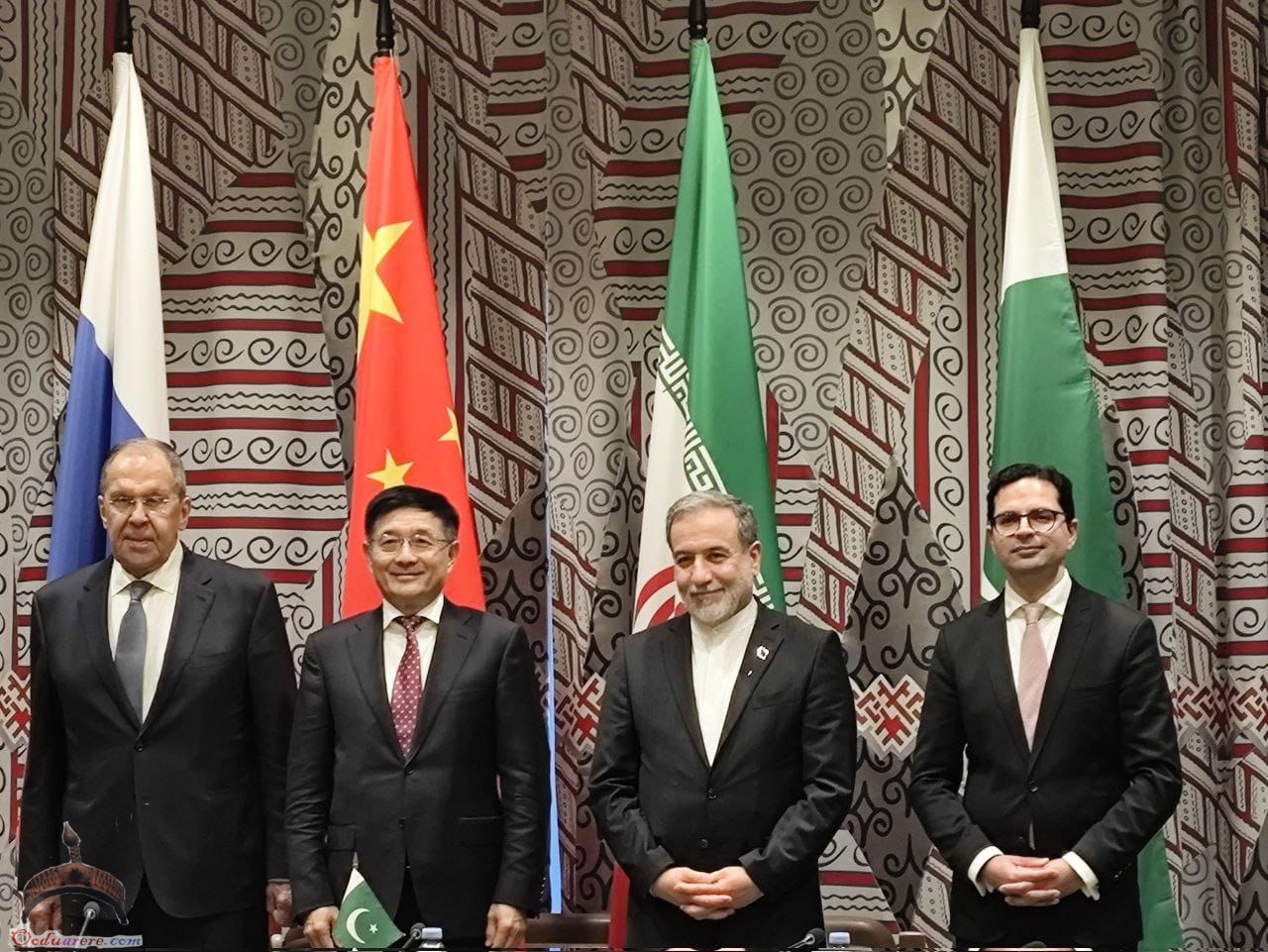An introduction to Iran’s ‘para-state’ sector: The key word there is ‘state’
The only question is how much money they have under their charge. The 1979 Islamic Revolution decided that too – rather a lot. They made sure that much of the economy would be run with a religious – not capitalist – goal. This is a hugely important – and socialist – fact of the Iranian economy.
However, it was not just handed over with no strings attached – this is not a Western capitalist bailout of bankers! Nor are the bonyads some sort of Clinton Foundation – which existed to funnel money to the Clintons to fund their lifestyle in return for political access and favourable political decisions – for Iranian mullahs.
The bonyads now employ millions of people. Perhaps because Westerners don’t like to see religious people in charge of anything, this is mistakenly called “corruption” instead of “avoiding unemployment and poverty”.
The bonyads are not just in consumer goods but have been awarded parts of more sensitive economic sectors; the same goes for the Basij, another co-operative foundation. However, it’s the Revolutionary Guards who have been handed partial control of the big portfolios, sectors and projects upon which the country’s well-being depends: oil, telecommunications, large-scale development and construction. This was obviously all by plan, and all of these groups, their political backers and their employees have discouraged private competition because their ideology is that the state should control it – they prefer the bonyads (and Basji and the Revolutionary Guards) to Western capitalism (ands thus Western capitalists).
The main complaint about the bonyads is that the factories and businesses they were awarded became more economically inefficient, but…the entire point of taking the money from the capitalists’ hands and giving a large part to charity is inherently against the cruel efficiency of market capitalism. Capitalists will thus always talk badly about the bonyads.
The bonyads report directly to the Supreme Leader – not only is he the religious leader of the nation, he is the ideological leader of the modern, social justice-obsessed principles of the Islamic Revolution. People have different opinions on the role of the Supreme Leader, but we should all agree that Khomeini and Khamenei are no hard-core capitalists!
This decision has both pros and cons:
They are not concerning about making money, but about providing social services. Khamenei is not the CEO of the bonyads, LOL. In effect, the bonyads give the “soul of the government” – the Supreme Leader – a direct and influential hand in the economy. One may be against this, but one may not call this “capitalist”.
They bonyads are not not under parliamentary supervision, causing a lack of transparency and accountability.
The bonyads pay no taxes. This reduces government revenue, technically, but in reality it is yet another redistribution measure as it is obviously an implicit government subsidy of economic development, employment and charity. Six of one, half a dozen of the other – economically.
The bonyads can also technically make investment and commercial plans apart from the government’s five-year economic plans, which create redundancies, competition and inefficiencies. However, considering that the Supreme Leader, and many other religious leaders are tied to the bonyads, and the government, and are also heavily-involved in long-term economic planning, it is not as if the bonyads operate like economic loose cannons totally divorced from the democratic planning centers, grosso modo. The head of the one of the largest bonyads, Ebrahaim Raisi, came second with 38% in the 2017 presidential election and is perhaps the leading candidate to follow Khamenei as Leader.
I’m sorry to bring up these realities, because if there’s one thing Westerners don’t tolerate about Iran it’s understanding its nuances.
But these are not really “nuances” at all – the bonyads are under government control…but not much parliamentary or executive control…but they are under total judicial and Supreme Leader-branch control. It’s simply a unique (revolutionary) system, but do NOT call the bonyads capitalist.
Do you really think the average CEO is more ethical than the average mullah?
You must have a lot of faith in capitalism…a funny kind of faith, to me.
Not only do Westerners accuse the bonyads of being capitalist, they say it much more harshly. They accuse: “These must be fronts for ‘millionaire mullahs’.” Of course Westerners are very cynical when it comes to religion or money, so when the two intersect….
Truly, this is only an issue for Iranians who are obsessed with being anti-government and want to believe the worst about it. Most mullahs in Iran are barely-middle class – it’s an inherently absurd argument. Do priests in your country really live lavishly?
At the highest levels of the religious establishment is there money? Sure, and with zakat and khum there always was and always will be, but in many ways mullahs today are poorer than ever: In pre-modern times being a mullah meant you had formal studies, which meant your family had the money to send you to school in the first place. Take Rafsanjani, the stereotypical “millionare mullah” – how many people know that he was already rich before becoming a revolutionary? He comes from pistachio money, which is very big money in Iran.
The idea of “Millionaire Mullahs” came from the uber-capitalist magazine Forbes in 2003, and by their longtime Russia editor, no less (Russia in the age of Yeltsin, when Forbes reporters were probably feted like kings as the average Russian suffered). Why on earth we (especially leftists) would accept Forbes’ account of the bonyads is totally beyond my comprehension. I can assure you that this section has given you more objective information about the bonyads than Forbes will ever write about Iran in sum and until the end of time. They hate bonyads, and any charity they do not get a lot of public credit (and tax credit) for.
Do the bonyads have a lot of money? Yes, but there is a difference between being stewards of money and being CEOs. They are expected – by the people, press & government – to actually do something with the money, factories, subsidies and workforces they are handed. A bonyad leader cannot be Gordon Gecko and liquidate parts of a bonyad for his personal profit. If a bonyad leader dies the bonyad is not transferred to his eldest son like in England, LOL. A bonyad leader cannot “go public” and sell shares…and sell them to foreigners, too, hahahahahah. LOL, I am really having fun thinking of ways the bonyads do not conform to capitalist rules!
A mullah driving a Maserati and living in a palace and throwing lavish parties and living like a rap music video – LOL, the press would die from happiness at such a story because it would be so big and sell so many papers!
The idea that Iranian bonyad leaders are all massively living corrupt, unequal, high-off-the-hog lifestyles – like EVERY Western business leader in a comparable situation, of course! – is an absurdity on religious principle, and on economic structural principle, and it also ignores Iran’s highly-critical press. Other than that…Forbes spelled some names right, at least.
Again, bonyad leaders are not Western CEOs and it is inaccurate to imagine them as such…not that anyone in the West has enough information about the bonyads to imagine them at all. They are not in it for unrestrained personal enrichment, nor shareholder enrichment, nor only profit.
Therefore: there can be no question from leftists that the bonyads are indeed superior in every way for society than the continued presence of the previous capitalist class.
Perfect? No. Ways to get them better? Yes.
Capitalist? Go away kid, ya bother me.
However, more explanation of the 1B Sector is needed – this section on the bonyads hopefully primes the pump for readers to realize just how unusual Iran’s economy is with these so-called “parastatal” organizations. I hope I have definitely shown that not only are the bonyads not capitalist, but they are also not “parastatal” – they are not separate from the the unique branches of Iran’s government.
For the past 100 years Iran’s economy has been hard to get a handle on, but the last 40 years have truly been unique. Hopefully this article shed some light on things, but much is left as Iran’s economy is truly revolutionary in conception and practice.
That’s why clarifying the much-discussed but rarely-implemented “privatisation” is the inspiration for the next part of this series – What privatisation in Iran? or Not THAT privatisation.
***********************************
This is the 2nd article in an 11-part series which explains the economics, history, religion and culture of Iran’s Revolutionary Shi’ism, which produced modern Iranian Islamic Socialism.
Here is the list of articles slated to be published, and I hope you will find them useful in your leftist struggle!
The WSWS, Iran’s economy, the Basij & Revolutionary Shi’ism: an 11-part series
How Iran got economically socialist, and then Islamic socialist
What privatisation in Iran? or Definitely not THAT privatisation
Structural similarities between Iran’s Basij and the Chinese Communist Party
Iran’s Basij: The reason why land or civil war inside Iran is impossible
A leftist analysis of Iran’s Basij – likely the first ever in the West
Iran’s Basij: Restructuring society and/or class warfare
‘Cultural’ & ‘Permanent Revolution’ in Revolutionary Shi’ism & Iranian Islamic Socialism
‘Martyrdom and Martyrdom’ & martyrdom, and the Basij
‘The Death of Yazdgerd’: The greatest political movie ever explains Iran’s revolution (available with English subtitles for free on Youtube here)
Iran détente after Trump’s JCPOA pull out? We can wait 2 more years, or 6, or…
Ramin Mazaheri is the chief correspondent in Paris for PressTV and has lived in France since 2009. He has been a daily newspaper reporter in the US, and has reported from Iran, Cuba, Egypt, Tunisia, South Korea and elsewhere. His work has appeared in various journals, magazines and websites, as well as on radio and television. He can be reached on Facebook.
 Ọmọ Oòduà Naija Gist | News From Nigeria | Entertainment gist Nigeria|Networking|News.. Visit for Nigeria breaking news , Nigerian Movies , Naija music , Jobs In Nigeria , Naija News , Nollywood, Gist and more
Ọmọ Oòduà Naija Gist | News From Nigeria | Entertainment gist Nigeria|Networking|News.. Visit for Nigeria breaking news , Nigerian Movies , Naija music , Jobs In Nigeria , Naija News , Nollywood, Gist and more








